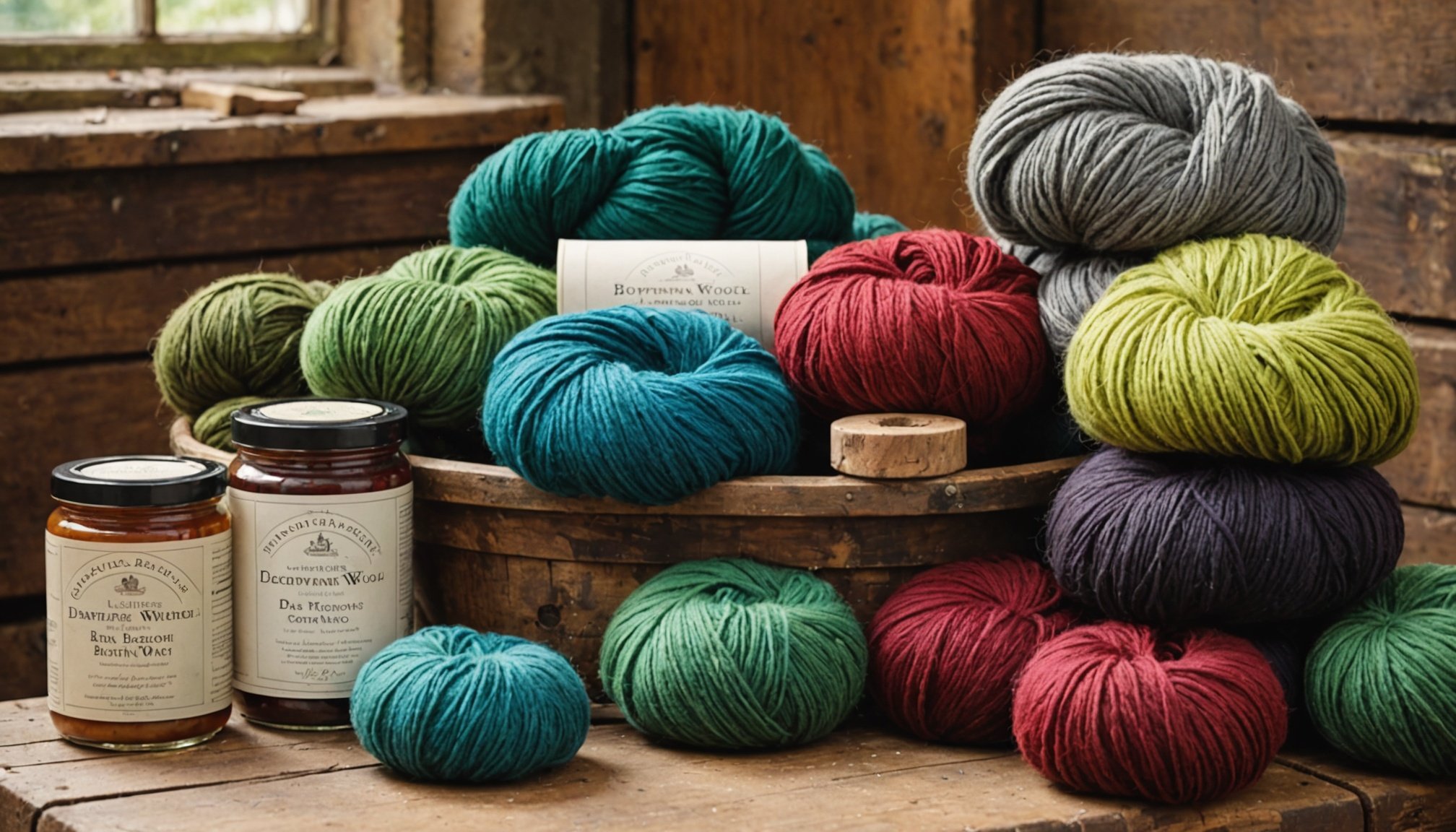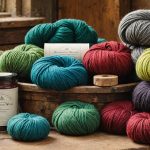Overview of Traditional British Wool Dyeing
The rich history of dyeing in Britain traces back to ancient times, showcasing a remarkable evolution over the centuries. Traditional British wool dyeing was initially reliant on natural dyes, extracted from local plants, minerals, and insects. This practice flourished, marking essential elements of Britain’s cultural economy and artistic expression.
Exploring the historical contours of wool dyeing, we find the introduction of synthetic dyes in the 19th century as a catalyst for change. Nevertheless, the reverence for natural dyes, such as woad, madder, and dyer’s greenweed, remained strong, initiating a distinct cultural significance. Each region in Britain boasted unique dyeing techniques, adding vibrant diversity to the craft.
Additional reading : Exploring somerset: a memorable adventure through britain’s exquisite cheese tasting culture
The cultural significance extends beyond aesthetics in traditional dyeing methods, reflecting local customs and traditions. Unique approaches, such as tartan patterns in Scotland or the intricacies of Welsh tapestries, highlight regional variations that offer more than just visual appeal.
Materials and natural dyes such as walnut husks, lichen, and various roots continue to influence modern British textile arts. Traditional British wool dyeing remains a testament to the creativity and resourcefulness of past generations, providing enthusiasts an opportunity to delve into a fascinating historical journey.
Additional reading : Uncover the craft of authentic british leather tanning: hands-on workshops for engaging visitor experiences
Engaging Workshops for Travelers
For those eager to explore wool dyeing workshops in the UK, an array of options await that cater to all experience levels. These experiences provide a chance to dive into the traditional art of wool dyeing through hands-on learning, led by skilled instructors passionate about preserving this craft.
Participants can engage in immersive experiences tailored to showcase regional dyeing techniques, enhancing their travel itineraries with cultural depth. Each workshop is a journey into the history and practice of traditional methods, offering a unique perspective on the regional variations of dyeing.
Testimonials from previous participants frequently highlight the joy of creativity and the satisfaction of crafting something tangible. Many travel enthusiasts express how these workshops enrich their understanding of British culture, bringing them closer to the communities involved.
Whether you’re a local looking to try something new or a visitor seeking an enriching cultural experience, wool dyeing workshops offer an interactive and engaging way to learn about and appreciate the historical art form.
Expert Instructors and Their Craft
Embarking on the journey of wool dyeing workshops, you’ll find yourself guided by expert instructors renowned for their skill and passion. These artisans are not just teachers but masters of their craft, each bringing unique insights and techniques honed over years of dedication.
Profiles of Renowned Instructors
Renowned instructors like Jane Middleton and Thomas Weir are staples in the wool dyeing community. Jane’s expertise lies in recreating historical dye patterns, while Thomas is celebrated for his innovative natural dye recipes.
Teaching Methods and Approaches
These instructors employ a variety of teaching methods to ensure that each participant gains a comprehensive understanding of the craft. Hands-on tutorials are coupled with in-depth discussions about the history and cultural relevance of dyeing practices.
Community Engagement and Contributions
Beyond workshops, these skilled artisans actively contribute to their communities. They often organize local events, fostering an appreciation for traditional techniques. Their contributions extend to online platforms, sharing knowledge and inspiration with a broader audience. Through these efforts, expert instructors ensure the beloved art of wool dyeing thrives across generations.
Practical Information for Participants
For those keen on booking workshops in wool dyeing, it’s essential to start with research. Visit reputable platforms or direct websites of workshops to reserve your spot. Early booking is advisable, especially for popular sessions, to secure participation. Upon booking, expect a confirmation with details about what to bring and wear, ensuring a smooth experience.
The costs of workshops can vary significantly, ranging from affordable beginner sessions to more advanced, intensive courses. Prices typically include materials, so there’s no need to worry about bringing supplies. Some workshops might offer packages that include meals or accommodation, which is a bonus for those seeking a more comprehensive retreat experience.
When planning your journey, consider travel options like public transport or car hire, which are often the most convenient. Additionally, accommodations nearby can include charming local inns or modern hotels, depending on your preference. Preparing in advance with transport and lodging specifics will make your participation seamless and enjoyable.
Immersive Experience Beyond the Workshop
Embarking on a wool dyeing adventure means indulging in much more than just the craft itself. Immerse yourself in the local environment with cultural experiences that enrich your understanding of British textile arts. Many regions offer museums and heritage centres showcasing traditional crafts and dyeing processes. Such attractions provide context and background, transforming your workshop experience into a comprehensive journey through history.
Take the opportunity to explore local attractions in the vicinity of your workshop. Whether it’s visiting a historical estate or strolling through picturesque villages, these experiences offer a glimpse into the cultural tapestry surrounding wool dyeing workshops. Additionally, engaging with regional markets can be both educational and enjoyable, presenting a chance to see and purchase local crafts.
For those seeking complementary activities, consider guided tours or nature walks that reveal the botanical origins of natural dyes. Participating in such activities underscores the importance of the environment in traditional British wool dyeing, offering a holistic view of the craft. Embrace this immersion and let it enhance your overall appreciation for the vibrant history of wool dyeing in Britain.











